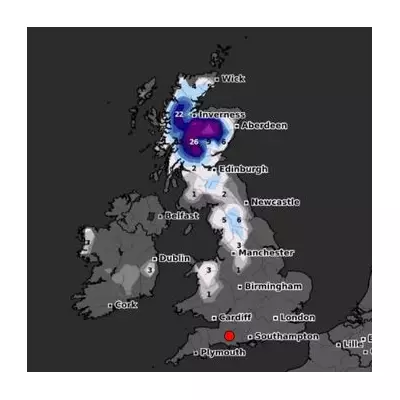
The Atlantic is brewing a significant meteorological event that will have far-reaching effects, with the UK's maritime community keeping a watchful eye. The powerful Hurricane Lee, currently churning in the open ocean, is poised to unleash a period of highly dangerous marine conditions.
While the core of the storm is forecast to travel north, well off the US coastline, its immense size means its impacts will be felt hundreds of miles from its centre. The National Hurricane Center (NHC) has issued stark warnings for the entire eastern seaboard of the United States, from Florida to Maine, and for Atlantic Canada.
A Coastline Under Threat
The primary concern for coastal regions isn't direct landfall from the wind field, but the powerful and life-threatening ocean conditions Lee will generate. The NHC has been explicit in its warnings, stating that "dangerous surf and rip currents have begun along much of the US East Coast" and are expected to intensify dramatically in the coming days.
These rip currents pose a grave risk to even the most experienced swimmers, capable of pulling people out to sea in a matter of seconds. Beachgoers are being urged to exercise extreme caution and to heed all warnings from local lifeguards.
The Power of a Distant Storm
Hurricane Lee's forecast path is a classic example of how a major hurricane can be devastating without making a direct hit. The storm's expansive wind field is what drives enormous waves, or swells, that radiate outward across the ocean.
These long-period swells will travel unimpeded across the Atlantic, eventually reaching the other side. This means that while the UK is not facing a direct threat from the hurricane itself, the energy from Lee will contribute to an already active and potent autumn storm pattern, likely resulting in larger waves and more vigorous conditions for Western Europe, including the British Isles.
What This Means for the UK
For the UK, the development of Hurricane Lee is a key talking point for meteorologists and maritime planners. Its progress will be closely monitored by the Met Office, as the energy it releases will influence the strength and track of weather systems downstream in the Atlantic over the next one to two weeks.
Shipping routes, ferry services, and coastal activities around the UK may experience knock-on effects, with a heightened potential for gales and rough seas as the storm's energy gets absorbed into the jet stream.
The situation remains fluid, and all communities with interests on the Atlantic are advised to stay informed with the latest forecasts from official sources like the National Hurricane Center and the UK Met Office.





